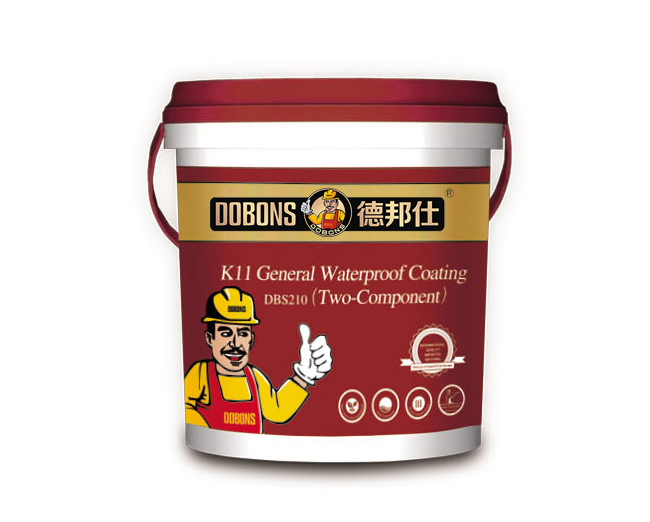How to Waterproof a Foundation?
Date of issue:2019-12-09 Author:Dobons Click:
Allow considerable float time for waterproofing. If you're using a waterproofing subcontractor, recognize that good waterproofers can be in high demand during the busy season. Rain can also delay waterproofing work.

Plan the layout of waterproofing well ahead of time. The plan elevations will likely show the finish grade line on the foundation walls, but these lines should be confirmed with the architect, if necessary. You don't want black, gooey waterproofing showing above grade. Watch for changes in the level of grade. A line of waterproofing descending at a diagonal from one level to another won't work if the architect has decided to handle the change with a retaining wall.
Construction Tips
Ideally, you should mark layout lines with a crayon or chalk line, especially on a complex foundation with varying grade. On a simple foundation, it might be safe to just instruct the waterproofer to keep his work so many inches from the top of the foundation. I like to see waterproofing as close to finish grade as possible, but no lower than 6 inches in any case. Don't leave form-tie holes that are below grade unprotected. Work out ahead of time what you're going to do at basement windows and bulkheads, porch foundations, and intersecting walls that don't have to be waterproofed.
When deciding what walls get waterproofed, follow this basic rule: Waterproof any foundation wall that has earth on one side and usable space on the other, including crawl spaces. Extend waterproofing at least 12 inches onto intersecting walls that don't have to be waterproofed. You might want to continue the waterproofing on other walls if it's a very wet site. Under extreme conditions, water has been known to travel through the keyway along the footing and into occupied space. Consult with the architect if you have any doubts.
Check the waterproofing manufacturers literature for temperature limitations. You're probably okay applying waterproofing on a cold day if you're working with a solvent-based material. But watch out if your material is water-based. The lower limit for some products is 40F.
Waterproofing Curing Time
Likewise, check the manufacturers requirements for concrete curing time. For every sheet membrane I know of, concrete must be cured a minimum of seven days before membrane application, sometimes even longer. This is because the concrete will continue to dry long after it's poured. The water vapor escaping from the concrete can prevent the waterproofing material from bonding. Concrete curing times for liquid membranes also vary considerably. Some require 14 days or longer. Others can be applied as soon as the forms are removed.
Protecting In-place Waterproofing
Most waterproofing systems need protection during backfilling. Some manufacturers have their own protection board for this purpose. A drainage mat or insulation can also function as protection board. An inexpensive 1-inch-thick expanded-polystyrene-foam board works fine as a basic protection course. However, one manufacturer has a protection board that functions as insulation, protection board, and drainage medium in one.
When adhering protection board, make sure to use an adhesive that's compatible with the waterproofing membrane. I've seen some adhesives eat right through waterproofing material. Besides providing protection during backfilling, you should protect waterproofing work that is in place from damage by other workers and trades. Keep workers from tracking across exposed membranes on footings, decks, or other horizontal surfaces. Don't expect others to be as sensitive as you are to the importance of waterproofing.
Waterproofing Safety
Waterproofing below grade can be dangerous. Because of the hazards, it's usually not a good idea for anyone to waterproof alone. If you're using a water-proofing subcontractor, make sure workers follow a written safety program and comply with hazard-communication requirements. Keep other trades and workers well away from the waterproofers work area.
Once you learn how to work with waterproofing materials, you can make good time without sacrificing safety. Here are some primary safety concerns that go along with waterproofing.
Flammable materials: Many waterproofing products are solvent-based. Keep fire, smoking materials, welding operations, cutting torches, and other sources of ignition well away from the area.
Respiration hazards: Use the manufacturer-recommended respirator, especially with solvent-based materials. In a close area, you might need an air-fed respirator. Don't be complacent about this. Solvent vapors are deadly, and a large surface area of newly applied material can put out a lot of vapor. The vapors are usually heavier than air, so they tend to build up in a sunken area like a foundation excavation.
Skin injuries: Waterproofing materials can contain all sorts of chemicals that can harm your skin. As needed, wear protective clothing and gloves. When cleaning tools in solvent, wear chemical-resistant gloves.
Injection hazards: Take precautions when working with or around spray equipment. A high-pressure airless sprayer can inject toxic chemicals directly into your blood-stream.
Eye injuries Wear protective glasses or goggles as needed, especially when working with liquids.










